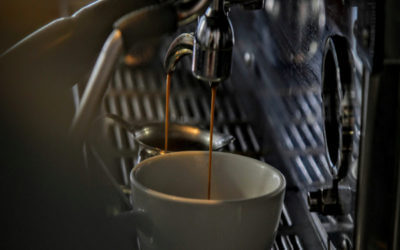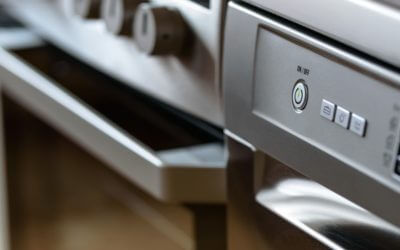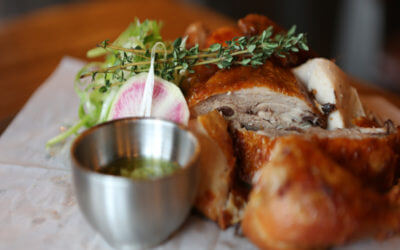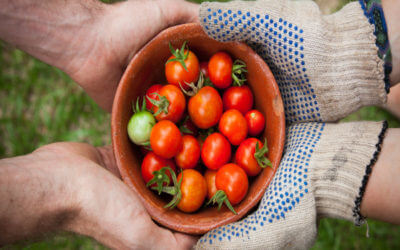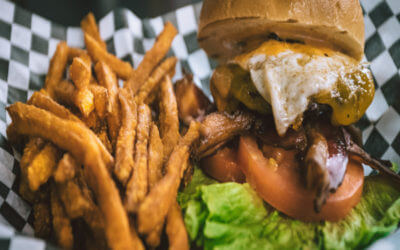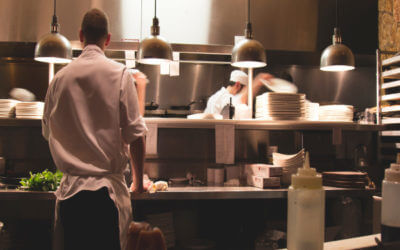Restaurant Supplies: The Growing Menu Role of Specialty Cheeses
May 1, 2019As a commercial restaurant owner or manager, you might wonder what you can do to revive your menu a bit. There are a lot of fun ways to diversify your menu, but one trend you might have noticed is the growing role of specialty cheeses.
We’ve all used common cheeses, from American to cheddar to mozzarella, in dozens of dishes on our menus. However, there are many other options that have a distinctive flavor that you can use in fun ways.
With some new ideas, you might find specialty cheese becomes a key part of your supplies.
Here are some ideas to whet your appetite!
Bleu Cheese
Bleu cheese is a popular, strongly flavored cheese option that a lot of people don’t realize is made with a type of mold. According to legend, in the 7th century, a shepherd forgot his lunch of bread and cheese in a cave. When he returned quite sometime later, it was full of Penicillium roqueforti mold.
I’m not sure what possessed this shepherd to eat the cheese at that point, but today we create cheese with this mold culture and enjoy it in dozens of ways.
In your restaurant, consider adding Gorgonzola to a risotto or pizza. Or, you might put Stilton on a salad with pears and walnuts.
A little goes a long way, making bleu cheese a great addition to your restaurant supplies for those who want to stay healthy but enjoy the excellent flavor.
Feta Cheese
With the Mediterranean Diet continuing to maintain its popularity, Feta cheese has become much more familiar to many Americans. Feta is made from goat’s milk, originally in Greece. In the EU, only cheeses manufactured in specific regions can be called “feta.”
70% of the cheese consumed in Greece is feta, and Americans love it for its salty full-flavored taste. Depending on the region, the firmness, texture, and flavor will vary.
Keep Feta cheese in your restaurant supplies for use in a variety of Mediterranean-themed dishes and salads. It also pairs well with lamb, and you can even put it on a burger or pizza!
Brie Cheese
Brie is known as “the queen of cheese,” and its soft and creamy texture stands alone. From France, this soft-ripened cheese was once used as a tribute paid to French kings.
French Brie in France is different than the American version because they sell it unstabilized. This means it can still mature and the flavor is more complex. However, it’s also prone to bacterial growth. Exported Brie is stabilized, so it never matures.
In your establishment, consider keeping Brie among your restaurant supplies as a dessert cheese. Who says dessert has to be all cakes and pies? Instead, serve baked Brie with figs, caramel apple Brie quesadillas, or honey brulee Brie.
Do You Have the Restaurant Supplies You Need?
Having unique cheeses among your ingredients is a great way to have fun with unique flavors on your menu. Of course, your restaurant needs a lot more when it comes to restaurant supplies than just cheese!
If you are looking to resupply your smallwares, replace cooking equipment, or fill other equipment needs, reach out to Tipton Equipment. We’ve been serving restaurants in Little Rock for many years, and we’d love to help you as well. Contact us today!
5 Things Every Restaurant Owner Should Do Before Buying Used Kitchen Equipment
Equipping your restaurant properly can cost a lot of money, so buying used kitchen equipment is the go-to choice for many restaurateurs. Buying used kitchen equipment for a restaurant is a bit different than buying used equipment for your home, however. You will...
Top Restaurant Technology Trends in 2018
When looking to buy restaurant supplies, you want to be on the leading edge of technology trends. This will keep your kitchen running smoothly. Let’s take a look at some of the most recent trends in restaurant supplies technology. 1. New Payment Options Who would...
5 Different Ice Shapes and Why You Should Care About Them
Ice makers are very popular in the restaurant and foodservice community because they eliminate the need to buy ice every day. And of course, adding an ice maker to your collection of foodservice equipment means you will always have ice on hand when you need it. An...
Pulping and Grinding: A Starter’s Guide to Reducing Commercial Food Waste Costs
For most restaurant owners and managers, the expenses involved in making meals are always under careful consideration. Water is needed to prepare, cook and wash food; power is necessary for food prep, cooking and cooling, and so on. However, how many of us consider...
Choosing the Right Milk Cooler: Cold Wall or Forced Air?
In a restaurant, milk is an essential to have on hand for coffee and other café-style beverages, for serving with kids’ meals, and as a key ingredient in many recipes. Keeping your milk properly chilled can be difficult without the proper restaurant equipment....
How to Choose Your Next Commercial Meat Smoker
The movies that connect with us on a personal level are the ones that linger in our memories forever. Anyone who has used a commercial meat smoker knows that they have a huge influence on the taste of a meal. You need to have just the right kitchen equipment to get a...
Are High Speed Ovens Too Good to be True?
You might have heard a few of the bold claims that foodservice equipment manufacturers have been making about high speed ovens, but they can’t be possible, right? Cooking three times as faster as regular ovens? Five times as fast? Fifteen times as fast? It may seem...
Choosing the Right Food Storage Containers for Your Restaurant
Choosing the right kitchen supplies will make a difference in your restaurant. Whether it is heavy duty kitchen equipment or food storage containers, each piece of equipment plays its own important role. Today, we are going to talk about how to choose the right food...
Tipton’s Guide to Perfect Poultry Trussing
Do you ever truss birds in your commercial kitchen? Trussing is a fantastic cooking technique because it makes poultry cook faster, look more attractive and taste better. If your commercial kitchen prepares poultry, you don’t want to miss these trussing tips. Trussing...
How to Eliminate Excess Condensation in Your Kitchen
Is your commercial kitchen getting steamy? If so, you could have more than just an uncomfortable working environment on your hands. Excess moisture in your commercial kitchen can result in the corrosion of equipment, the development of mold, and even damage to your...
The DIY Guide to Your Restaurant’s Own Garden
Stocking your restaurant supply with your own home-grown herbs and produce can truly bring your dishes to life. When it comes to food, everyone knows there’s nothing like homemade and home-grown. Having your own culinary garden, however large or small, can help you...
5 Reasons a Meat Grinder Will Set Your Burgers Apart
The more you do to prepare your foods in-house with the right kitchen equipment, the fresher and more flavorful your dishes become. There are all sorts of restaurants offering fast-food style burgers, but some diners are looking for the real deal. A fresh, juicy...
Pest Preventions to Implement in Your Commercial Kitchen
Restaurant pests: it’s something that few people want to think about. Like it or not, pest management is an essential consideration for every commercial kitchen. Offering food, shelter and water, the unprepared commercial kitchen naturally provides everything pests...
Choosing the Right Material for Your Cooking Equipment
Kitchens are very unique to their chef. Just like a car mechanic has a toolbox unique to them, so is the cooking equipment in a kitchen. And over time, the same cooking equipment become a natural extension of the chef. What tools are you using in your kitchen? It...
Kitchen Hacks for Your Home
Some people are naturally good at certain skills. We all know someone who is naturally book smart, athletic, or musically inclined. What makes you jealous of them is how easy they make tasks seem compared to you. One skill might be cooking. Your dream may not be...

